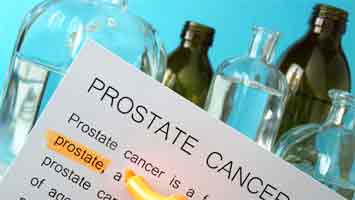Use of ADT For Treatment of Prostate Cancer Linked With Increased Risk of Kidney Injury
 In a study that included more than 10,000 men with nonmetastatic prostate cancer, use of androgen deprivation therapy (ADT) was associated with a significantly increased risk of acute kidney injury, with variations observed with certain types of ADTs, according to a study in the July 17 issue of JAMA.
In a study that included more than 10,000 men with nonmetastatic prostate cancer, use of androgen deprivation therapy (ADT) was associated with a significantly increased risk of acute kidney injury, with variations observed with certain types of ADTs, according to a study in the July 17 issue of JAMA.
“Androgen deprivation therapy is the mainstay treatment for patients with advanced prostate cancer. While this therapy has been traditionally reserved for patients with advanced disease, ADT is increasingly being used in patients with less severe forms of the cancer, such as in patients with biochemical relapse who have no evidence of metastatic disease. Although ADT has been shown to have beneficial effects on prostate cancer progression, serious adverse events can occur during treatment,” according to background information in the article. “… the testosterone suppression associated with this therapy may lead to a hypogonadal condition that can have detrimental effects on renal function, thus raising the hypothesis that ADT-induced hypogonadism could potentially lead to acute kidney injury (AKI).” The mortality rate is high for patients with AKI (around 50 percent).
Francesco Lapi, Pharm.D., Ph.D., of Jewish General Hospital, Montreal, Canada, and colleagues conducted a study to determine whether the use of ADT was associated with an increased risk of AKI in patients newly diagnosed with prostate cancer. The researchers used medical information extracted from the UK Clinical Practice Research Datalink linked to the Hospital Episodes Statistics database. The study included men newly diagnosed with nonmetastatic prostate cancer between January 1997 and December 2008 who were followed up until December 2009. Cases were patients with incident AKI during follow-up who were randomly matched with up to 20 controls on age, calendar year of prostate cancer diagnosis, and duration of follow-up. Analysis was conducted to estimate the odds ratios of AKI associated with the use of ADT. ADT was categorized into 1 of 6 mutually exclusive groups: gonadotropin-releasing hormone agonists, oral antiandrogens, combined androgen blockade, bilateral orchiectomy, estrogens, and combination of the above.
A total of 10,250 patients met the study inclusion criteria. During follow-up, 232 cases with a first-ever AKI admission were identified. All cases were matched with at least l control. The researchers found that compared with never use, current use of ADT was significantly associated with a 2.5 times increased odds of AKI. “This association was mainly driven by a combined androgen blockade consisting of gonadotropin-releasing hormone agonists with oral antiandrogens, estrogens, other combination therapies, and gonadotropin-releasing hormone agonists.”
“To our knowledge, this is the first population-based study to investigate the association between the use of ADT and the risk of AKI in men with prostate cancer. In this study, the use of ADT was associated with an increased risk of AKI, with variations observed with certain types of ADTs. This association remained continuously elevated, with the highest odds ratio observed in the first year of treatment. Overall, these results remained consistent after conducting several sensitivity analyses,” the authors write.
“These findings require replication in other carefully designed studies as well as further investigation of their clinical importance.”
Source Newsroom: American Medical Association (AMA)
JAMA. 2013;310(3):289-296

